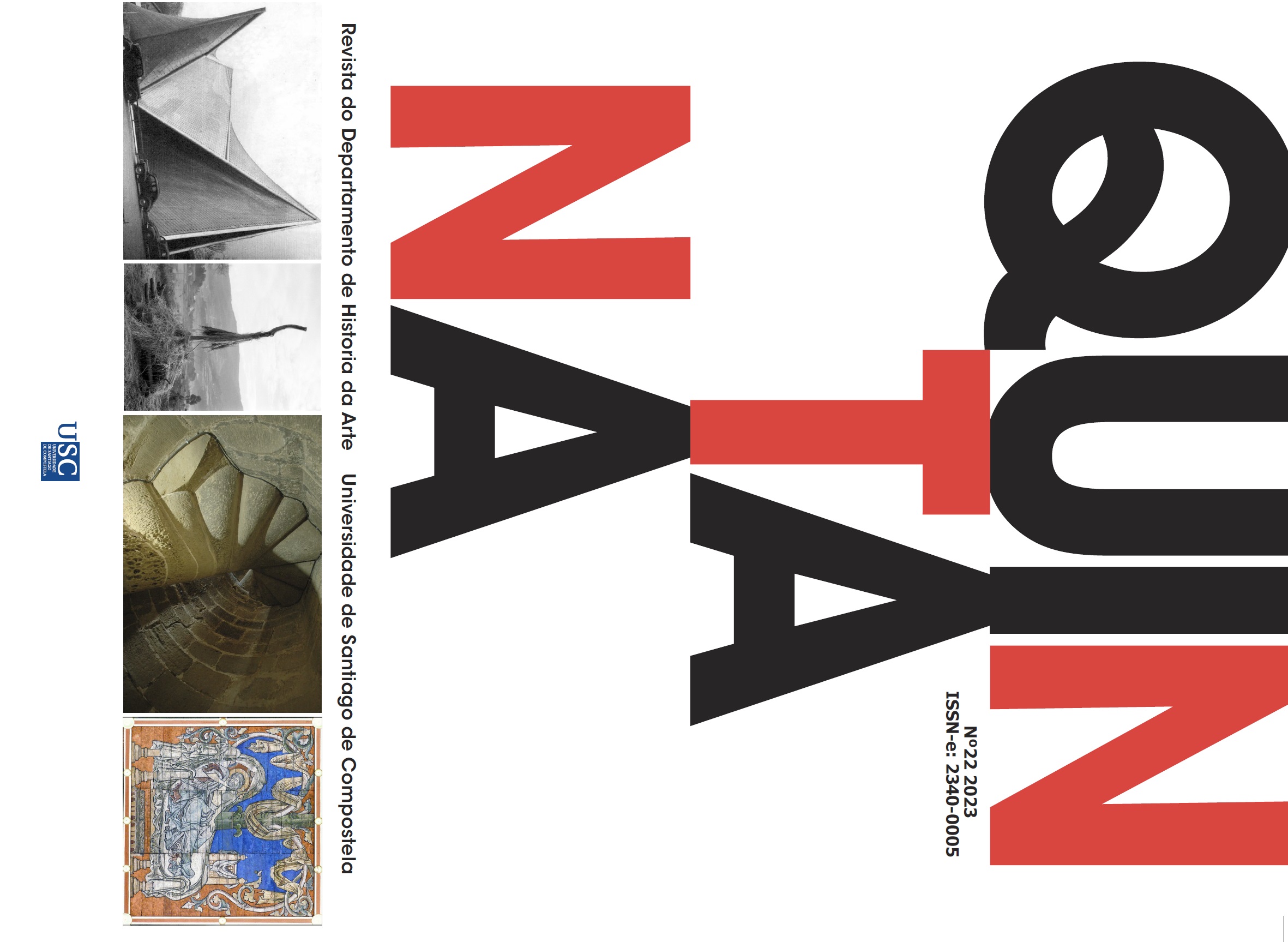O ATLAS COMO CIÊNCIA DAS IMAGENS: HISTÓRIA DA ARTE E HISTÓRIA DA CULTURA EM GERHARD RICHTER E ABY WARBURG
Contenido principal del artículo
Resumen
Este artículo busca demostrar que es posible establecer importantes paralelismos entre el Atlas de Gerhard Richter (1962-2013) y el Atlas Mnemosyne de Aby Warburg (1924-29), pese a las diferencias históricas y temáticas que separan los dos proyectos. Partiendo de la amplia relación entre archivo, memoria e imagen, el artículo se centra en el análisis de tres aspectos fundamentales: el montaje-saber como base para la constitución de un relato sin texto; la importancia del componente autobiográfico y ficcional en los proyectos historiográficos de estos dos autores; la centralidad de los procesos de inscripción, transformación y supervivencia de las imágenes, así como la respectiva correlación con el espacio de la memoria cultural, abordada aquí en su multiplicidad de saberes y objetos, pero también como principio ético-científico de interpretación del saber histórico. Aportando pistas para posteriores estudios comparativos entre Richter y Warburg, - hasta la fecha prácticamente inexistente en la literatura especializada (el texto de Buchloh sobre el archivo anómico, de 1999, toca sólo superficialmente esta relación), - el artículo pretende también contribuir a la reevaluación epistemológica de algunos de los significados, valencias y conceptos inherentes a los atlas de estos dos historiadores-artistas alemanes.
Palabras clave:
Detalles del artículo
Referencias
Agamben, Giorgio. “Notas sobre o gesto”. Interactividades, Artes Tecnologias Saberes, coord. Maria Teresa Cruz (1997): 16-21.
Angel, Sara. “The Mnemosyne Atlas and the Meaning of Panel 79 in Aby Warburg's Oeuvre as a Distributed Object”. Leonardo 44 no. 3 (June 2011): 266-267. https://doi.org/10.1162/LEON_a_00169
Bing, Gertrud. “A. M. Warburg”. Journal of the Warburg and Courtauld Institutes 28 (1965): 299-313. https://doi.org/10.2307/750675
Borchardt-Hume, Achim. “’Dreh Dich Nicht Um’: Don’t Turn Around. Richter’s Paintings of the Late 1980s”. In Panorama: New Perspectives on Richter, edited by Mark Godfrey, 163-175. London: Tate Publishing, 2011.
Buchloh, Benjamin. “Gerhard Richter's 'Atlas': The Anomic Archive”. October 88 (Spring 1999): 117-145. https://doi.org/10.2307/779227
Buchloh, Benjamin. “Amnesia and Anamnesis”. In Gerhard Richter’s Birkenau Paintings, edited by Benjamin Buchloh, 5-34. Cologne: Walther Konig Verlag, 2016.
De Laude, Silvia. “Aby Warburg, Die römische Antike in der Werkstatt Ghirlandaios. Traccia della conferenza alla Biblioteca Hertziana di Roma (19 gennaio 1929), con una Nota al testo (e 'agenda warburghiana')”. Engramma 119 (Set. 2014). http://www.engramma.it/eOS/index.php?id_articolo=1624
Didi-Huberman, Georges. Devant le temps. Paris: Les Éditions de Minuit, 2000.
Didi-Huberman, Georges. L'image survivante: Histoire de L'art et temps des fantômes selon Aby Warburg. Paris: Les Éditions de Minuit, 2002.
Didi-Huberman, Georges. “Knowledge: Movement (The Man Who Spoke to Butterflies)”. In Michaud, Philippe-Alain. Aby Warburg and The Image in Motion. New York: Zone Books, 2007.
Didi-Huberman, Georges. “Die Malerei in ihrem aporetischen Moment”. In Gerhard Richter: Birkenau, edited by Helmut Friedel, 31.55. Exh. cat. Cologne: Museum Frieder Burda, 2016.
Duarte, Miguel Mesquita. “(Dis)Figuration of Memory In, Around, and Beyond Gerhard Richter's Atlas: Between Photography, Abstraction, and the Mnemonic Construction”. RIHA Journal 0200 (2018). https://doi.org/10.11588/riha.2018.0.70280
Guerreiro, António. “Aby Warburg e a História como Memória”. Revista de História das Ideias 23 (2002): 389-407.
Haidu, Peter. “The Dialectics of Unspeakability: Language, Silence, and the Narratives of Desubjectification”. In Probing the Limits of Representation, edited by Saul Friedlander, 277-299. Cambridge, Massachusetts, London: Harvard University Press, 1992.
Jaskot, Paul B. The Nazi Perpetrator: Postwar German Art and the Politics of the Right, Minneapolis and London: University of Minnesota Press, 2012. https://doi.org/10.5749/minnesota/9780816678242.001.0001
Johnson, Christopher D. Memory, Metaphor and Aby Warburg’s Atlas of Images. Ithaca, NY: Cornell University Press, 2012. https://doi.org/10.7591/cornell/9780801477423.001.0001
Michaud, Philippe-Alain. Aby Warburg and The Image in Motion. New York: Zone Books, 2004.
Negri, Antonio. “On Gilles Deleuze & Félix Guattari, A Thousand Plateaus”. Graduate Faculty Philosophy Journal 18, no.1 (1995): 93-109. https://doi.org/10.5840/gfpj19951812
Querini, Gino. “On the political use of images. Some reflections on the last panels of Aby Warburg's Mnemosyne Atlas”. Studies in Visual Arts and Communication: an international journal 2, no. 2 (2015): 1-25 on-line. http://journalonarts.org/wp-content/uploads/2016/07/SVACij_Vol2_No2-2015-Querini-Warburg_Mnemosyne_Atlas.pdf.
Rampley, Matthew. “Archives of Memory: Walter Benjamin's Arcades Project and Aby Warburg's Mnemosyne Atlas”. In The Optic of Walter Benjamin, edited by Alex Coles, 94-117. London: Black Dog Publishing, 1999.
Rancière, Jacques. La Fable cinématographique. Paris: Éditions du Seuil, 2001.
Richter, Gerhard. Atlas, ed. Helmut Friedel. New York: D.A.P./Distributed Art Publishers, 2007.
Richter, Gerhard. Interview conducted by Julia Voss and Peter Geimer, Frankfurter Allgemeine Zeitung (25/02/2016). http://www.faz.net/aktuell/feuilleton/kunst/gerhard-richter-im-interview-ueber-gemaeldezyklus-birkenau-14088410.html
Ricoeur, Paul. La Mémoire, L’Histoire, L’Oubli. Paris: Seuil, 2000.
Rothberg, Michael. “Multidirectional memory”. Témoigner. Entre histoire et mémoire 119 (2014). https://doi.org/10.4000/temoigner.1494
Sayad, Cecilia. Performing Authorship: Self-Inscription and Corporeality in the Cinema. London: Bloomsburry, 2013. https://doi.org/10.5040/9780755693399
Samain, Etienne. “As 'Mnemosyne(s)' de Aby Warburg: Entre Antropologia, Imagens e Arte”, Revista Poiésis 17 (2011): 29-51. https://doi.org/10.7476/9788526814738.0005
Schoell-Glass, Charlotte. “’Serious issues’: The Last Plates of Warburg's Picture Atlas Mnemosyne”. In Art History as Cultural History. Warburg’s Projects, edited by Richard Woodfield, 183-208. London and New York: Routledge, 2001.
Warburg, Aby. “The absorption of expressive values of the past”, translated by Matthew Rampley. Art in Translation 1 no. 2 (2009): 273–283. https://doi.org/10.2752/175613109X462708
Warburg, Aby. Atlas Mnemosyne, trad. Joaquín Chamorro Mielke; colab. Claudia Brink. Madrid: Akal, 2010.
Warburg, Aby. O Nascimento de Vénus e a Primavera de Sandro Botticelli. Lisboa: KKYM, 2012.
Warburg, Aby. “Die römische Antike in der Werkstatt Ghirlandaios”. Engramma 119 (Set. 2014). URL: http://www.engramma.it/eOS/index.php?id_articolo=1624
Warburg, Aby, e Gertrud Bing. Diario romano, ed. Mauricio Ghelardi. Madrid: Ediciones Siruela, 2016.
Wind, Edgar. “Warburg's Concept of Kulturwissenschaft and its Meaning for Aesthetics”. In The Eloquence of Symbols, edited by Jaynie Anderson, 21-35. Oxford: Clarendon Press, 1993.
Vitto, Cindy L. “The Virtuous Pagan in Middle English Literature”. Transactions of the American Philosophical Society 79, no. 5 (1989): 1-100. https://doi.org/10.2307/1006545
Artículos más leídos del mismo autor/a(s)
- Bruno Marques, Miguel Mesquita Duarte, Género e voyeurismo desmontado: quem olha para quem no cinema experimental de Andy Warhol, Yoko Ono e Julião Sarmento? , Quintana: revista do Departamento de Historia da Arte: Núm. 15 (2016)







